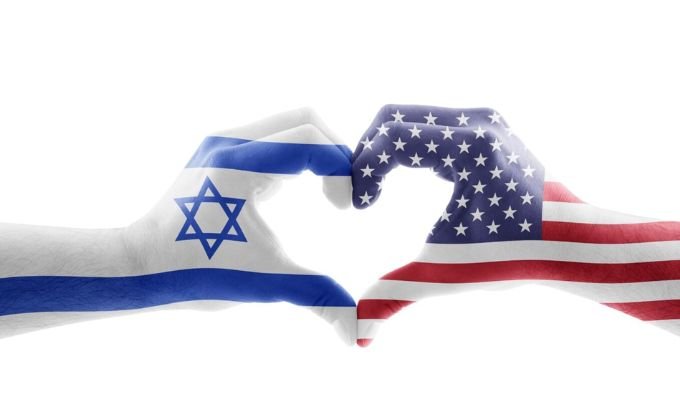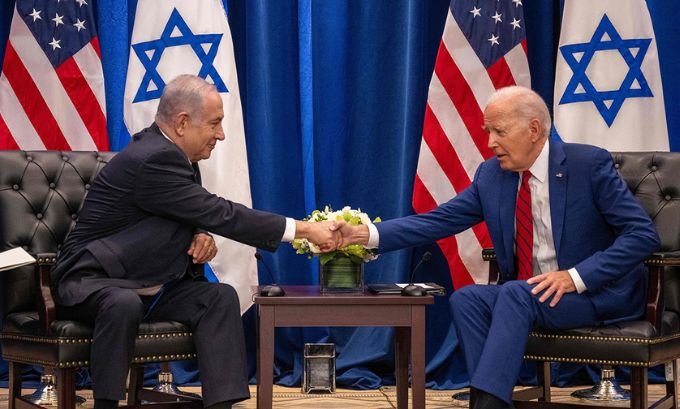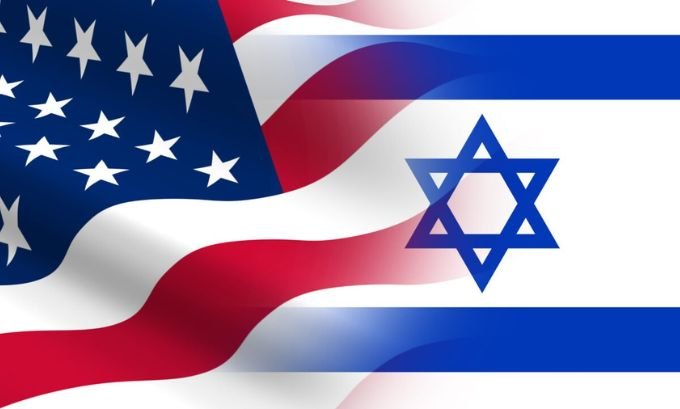The relationship between the United States and Israel is a cornerstone of Middle Eastern geopolitics. It’s often called a “special relationship,” built on shared values and strategic interests. This bond is most visible through substantial U.S. military aid, which has shaped regional power dynamics for decades.
This article explores the deep historical roots and modern complexities of us-israel relations. We will examine how foundational moments like the Balfour Declaration and the Camp David Agreement set the stage for today’s alliance. We’ll also analyze current challenges, including the conflict with Hamas in Gaza, the role of defense systems like the Iron Dome, and the growing debate within American politics, highlighted by figures like Senator Bernie Sanders.
Table of Contents
Author’s Note: A Personal Look at the “Special Relationship”
As a political analyst who has followed Middle Eastern policy for over a decade, I’ve seen the term “special relationship” used countless times to describe the bond between the U.S. and Israel. During my time covering congressional hearings on foreign aid, I witnessed firsthand the bipartisan consensus that has historically defined this partnership. I recall a specific debate in 2018 over the annual aid package. Despite some dissent, the overwhelming support was a powerful display of this long-standing alliance.
However, in recent years, the tone has shifted. Conversations that were once held behind closed doors are now public. I’ve listened to younger constituents voice their concerns to lawmakers, questioning the unconditional nature of the aid. This shift from quiet consensus to open debate is a defining feature of the current state of us-israel relations. It’s not just about dollars and cents; it’s about a generational change in how Americans view their country’s role in the world. This article aims to provide context for that evolution, connecting the historical dots to the headlines we see today.
What Defines US-Israel Relations Today?
At its core, the relationship is a strategic alliance built on decades of cooperation. The United States provides Israel with significant financial and military support, viewing the nation as a key democratic partner in a volatile region. This support is designed to ensure Israel’s security and maintain its Qualitative Military Edge (QME), a policy ensuring it has superior military capabilities over its neighbors.
This partnership is multifaceted, involving intelligence sharing, joint military exercises, and technological collaboration, particularly on defense systems like the Iron Dome. However, the relationship is also facing unprecedented scrutiny. Debates over its terms, especially regarding the Israeli-Palestinian conflict, are becoming more prominent in American political discourse.
The Foundation: From Balfour to Statehood
The roots of us-israel relations predate Israel’s founding in 1948. The story begins with a key historical document.
The Balfour Declaration of 1917
The Balfour Declaration was a public statement issued by the British government during World War I. It announced support for the establishment of a “national home for the Jewish people” in Palestine. This declaration was a monumental moment for the Zionist movement. The United States, under President Woodrow Wilson, endorsed the declaration, marking an early alignment with the goal of creating a Jewish state. This initial support laid the groundwork for future American policy in the region.

Truman’s Recognition in 1948
On May 14, 1948, the state of Israel declared its independence. Just 11 minutes later, President Harry S. Truman made the United States the first country to officially recognize the new nation. Truman’s decision was influenced by his personal sympathies and the strong advocacy of American Zionists. However, this early support was primarily political. Significant financial and military assistance would only come later, shaped by the emerging Cold War.
The Evolution of U.S. Military Aid to Israel
U.S. military aid is the most tangible aspect of the special relationship. It transformed from modest economic loans to a massive, formalized military financing program that underpins Israel’s defense strategy.
Initially, U.S. aid was focused on helping the new country resettle immigrants and build its economy. The shift towards military assistance began in the 1970s, driven by regional conflicts and Cold War politics. The 1973 Yom Kippur War was a turning point. After a surprise attack by Egypt and Syria, both Soviet clients, the U.S. launched Operation Nickel Grass, an airlift to resupply the Israeli military. This intervention was crucial and solidified the strategic military alignment between the two nations.
Today, the United States provides Israel with approximately $3.8 billion in military aid annually under a 10-year Memorandum of Understanding (MOU). This funding is not a blank check; it is designated for acquiring U.S. defense equipment, services, and training.
Key Components of U.S. Military Aid
| Aid Component | Description | Annual Amount (Approx.) |
|---|---|---|
| Foreign Military Financing (FMF) | Grants for acquiring U.S. military equipment, services, and training. | $3.3 Billion |
| Missile Defense Funding | Cooperative funding for missile defense programs, including the Iron Dome, David’s Sling, and Arrow systems. | $500 Million |
| Special Funding Requests | Additional aid packages requested during crises, such as the $14.3 billion requested after the October 7 attacks by Hamas. | Varies |
This assistance represents about 16% of Israel’s total military budget. It enables Israel to purchase advanced American technology, including F-35 fighter jets, and to co-develop cutting-edge defense systems.
The Iron Dome: A Case Study in Cooperation
The Iron Dome is perhaps the most famous product of U.S.-Israeli defense cooperation. It is a short-range air defense system designed to intercept and destroy rockets and artillery shells fired from distances of 4 to 70 kilometers.
- What it does: The system uses radar to detect incoming threats and then fires a Tamir interceptor missile to destroy them in the air.
- Why it’s important: It has proven effective in protecting Israeli population centers from rocket attacks, particularly from Gaza.
- U.S. Involvement: The United States has invested over $1.6 billion in the Iron Dome program. This funding helps Israel produce the system’s components and maintain its stockpile of interceptor missiles, which are costly to replenish.
The success of the Iron Dome serves as a prime example of how U.S. military aid directly enhances Israel’s security. It is a tangible outcome of the strategic partnership.
Diplomatic Milestones and Their Impact
Diplomacy has been as crucial as military aid in shaping us-israel relations. Key agreements have redefined the political landscape of the Middle East.
The Camp David Accords: A Shift in Alliances
The Camp David Agreement of 1978 was a landmark achievement in U.S. foreign policy. Brokered by President Jimmy Carter, the accords led to a peace treaty between Israel and Egypt, two nations that had been in a state of war for three decades.
This agreement fundamentally altered the strategic map. By making peace with its most powerful Arab neighbor, Israel significantly reduced the existential threat it faced. For the United States, the treaty brought two key allies, Egypt and Israel, firmly into the American sphere of influence during the Cold War.
Following the treaty, U.S. aid to both countries increased dramatically. This aid was framed as a “peace dividend”—an investment to ensure the stability of the agreement. The Camp David Agreement institutionalized the flow of large-scale U.S. military aid to Israel, making it a permanent fixture of the relationship.
The Palestinian Conflict and Its Role in the Relationship
The Israeli-Palestinian conflict is an inseparable part of the us-israel relations narrative. U.S. policy has long been based on the goal of a two-state solution, but its approach has varied.
The Palestinian Authority and U.S. Engagement
The Oslo Accords of the 1990s, also brokered by the U.S., created the Palestinian Authority (PA). The PA was intended to be a governing body for Palestinians in parts of the West Bank and Gaza, serving as a partner for Israel in peace negotiations.
The U.S. has historically been the largest financial donor to the Palestinian Authority, providing funds for security, infrastructure, and humanitarian needs. This aid was seen as essential for state-building and maintaining stability. However, this relationship has been fraught with challenges. U.S. aid has often been cut or conditioned based on the PA’s actions, such as its attempts to gain recognition at the United Nations or its reconciliation efforts with Hamas.
The Gaza Strip and the Hamas Challenge
The situation in Gaza presents one of the most difficult challenges for us-israel relations. Since Hamas, an organization designated as a terrorist group by the United States, took control of Gaza in 2007, the territory has been under an Israeli-Egyptian blockade.
The conflict between Israel and Hamas has led to several wars, creating immense humanitarian crises in Gaza and posing dilemmas for U.S. policymakers. The U.S. staunchly supports Israel’s right to defend itself from Hamas attacks. At the same time, it faces international pressure to address the humanitarian situation in Gaza and restrain Israeli military actions. This dual pressure often places the United States in a difficult diplomatic position.

A Shifting Consensus in American Politics
For decades, support for Israel was a rare point of bipartisan unity in Washington. That consensus is now showing significant cracks, particularly within the Democratic Party.
The Rise of Conditional Aid: The Bernie Sanders Effect
A growing progressive wing is calling for greater scrutiny of U.S. military aid to Israel. They argue that aid should be conditioned on Israel’s compliance with U.S. law and international human rights standards, particularly concerning its actions in the Palestinian territories.
Senator Bernie Sanders has become a leading voice for this movement. In January 2024, he introduced a historic resolution that would have required the State Department to report on potential human rights violations committed by Israel in Gaza using U.S.-supplied weapons. The resolution would have frozen aid if the report was not produced.
Although the resolution was defeated by a vote of 72-11, the fact that it was debated on the Senate floor was a landmark event. It signaled a significant shift in the conversation around us-israel relations. Proponents of this view argue that as a provider of aid, the United States has both the right and the responsibility to ensure its weapons are not used improperly.
What I Like / Strengths of the Current Relationship
- Strong Security Cooperation: The intelligence sharing and joint military development between the U.S. and Israel have been highly effective in countering regional threats.
- Technological Innovation: The partnership has produced groundbreaking defense technologies like the Iron Dome, which have saved civilian lives.
- Regional Stability: The alliance has historically served as a stabilizing force, deterring larger-scale conflicts in the Middle East.
- Democratic Partnership: Israel remains one of the few stable democracies in the region, making it a natural strategic partner for the United States.
Areas for Improvement and Ongoing Challenges
- The Palestinian Issue: The lack of progress toward a two-state solution remains a major source of tension and instability, complicating us-israel relations.
- Shifting Public Opinion: Growing criticism in the U.S. and globally regarding Israeli policies could strain the long-term viability of unconditional support.
- Humanitarian Concerns: The humanitarian crisis in Gaza creates a moral and diplomatic challenge for the U.S., which is seen as complicit by some critics.
- Partisan Divide: The increasing polarization of the issue in American politics threatens the traditionally strong bipartisan support that the relationship has relied upon.
Frequently Asked Questions (FAQ)
1. How much aid does the U.S. give Israel every year?
The United States currently provides Israel with approximately $3.8 billion in aid per year, based on a 10-year agreement. This is composed of $3.3 billion in military financing and $500 million for missile defense programs.
2. Why did the U.S. start giving aid to Israel?
Initial aid after 1948 was economic. Large-scale U.S. military aid began in the 1970s, solidifying during the Cold War. The U.S. viewed Israel as a strategic buffer against Soviet influence in the Middle East, a perception cemented after the 1973 Yom Kippur War.
3. What is the Iron Dome?
The Iron Dome is a mobile all-weather air defense system developed by Israel with significant financial and technical support from the United States. It is designed to intercept and destroy short-range rockets and artillery shells aimed at populated areas.
4. What was the Camp David Agreement?
The Camp David Agreement was a pair of political agreements signed in 1978 by Egyptian President Anwar Sadat and Israeli Prime Minister Menachem Begin, following negotiations brokered by U.S. President Jimmy Carter. It led to the Egypt-Israel peace treaty in 1979 and normalized relations between the two countries.
5. Who is Bernie Sanders and what is his position on aid to Israel?
Bernie Sanders is a U.S. Senator from Vermont. He is a prominent progressive voice who advocates for conditioning U.S. military aid to Israel. He argues that American aid should not support actions that violate human rights and has called for greater accountability from the Israeli government.
6. What is the Balfour Declaration?
The Balfour Declaration was a 1917 letter from British Foreign Secretary Arthur Balfour to a leader of the British Jewish community. It declared British support for creating a “national home for the Jewish people” in Palestine. It was a key moment that paved the way for the eventual creation of Israel.
7. How does Hamas affect U.S.-Israel relations?
The United States designates Hamas as a terrorist organization. The ongoing conflict between Israel and Hamas, particularly in Gaza, strongly influences U.S. policy. The U.S. supports Israel’s right to self-defense against Hamas but also faces pressure to address the humanitarian impact of these conflicts.
Conclusion: A Partnership at a Crossroads
The “special relationship” between the United States and Israel has evolved dramatically since its early days. What began as political recognition rooted in post-Holocaust sympathy and the historical vision of the Balfour Declaration grew into an ironclad strategic and military alliance during the Cold War. Milestones like the Camp David Agreement and joint ventures like the Iron Dome highlight a partnership that has shaped the modern Middle East.
Today, us-israel relations stand at a crossroads. The conflict with Hamas in Gaza and the growing debate in American politics, championed by figures like Bernie Sanders, are testing the limits of the long-standing consensus. The core of the alliance remains strong, but the terms of engagement are being questioned more openly than ever before. The future of this relationship will depend on how both nations navigate the complex realities of the Israeli-Palestinian conflict, the shifting political landscape in the U.S., and the enduring quest for security and peace in the region.
If you are interested in learning more about the intricacies of U.S. foreign policy, we encourage you to explore our other analyses and sign up for our newsletter for in-depth updates.

